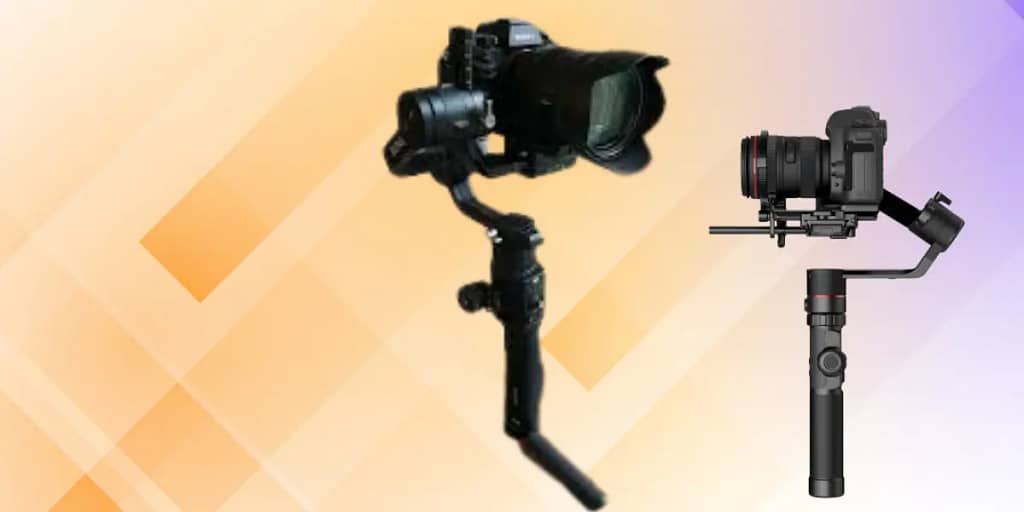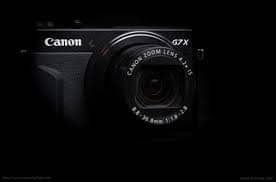Last Updated on: 15th March 2023, 08:35 am
As technology continues to evolve, so does the world of photography and videography. With the rise of social media and the need for high-quality content, smooth and professional-looking videos have become more important than ever before. This is where gimbals come in, a tool that is essential for any videographer or photographer who wants to capture stunning footage without the shakes and blurs that often come with handheld cameras.
We will compare the top gimbals on the market today and help you decide which one is best suited for your needs. Whether you’re a professional photographer, videographer, or just a tech enthusiast, we’ve got you covered.
From understanding how gimbals work to understanding the various available types, we will help you better understand everything you need to know about gimbals in this guide.
In this article, we’ll dive deep into the different functions of gimbals for cameras, the types of stabilization technology available, and how they can be used in your camera setup. Get ready to take your filmmaking skills to the next level!
What is a gimbal?
Gimbals are crucial devices for stabilizing cameras and other objects, using mechanical, electronic, and software stabilization technologies. They come in different sizes, including hand-held and tripod-mounted systems, and are designed for specific purposes, such as action or 360-degree cameras.
Gimbals have a wide range of applications in photography, videography, filmmaking, live streaming, and other fields. They have gained popularity among content creators and vloggers looking to capture high-quality footage.
Types of gimbals:
If you’re in the market for a gimbal, it’s important to know that there are two main types to choose from 2-axis and 3-axis gimbals. While both have their own set of advantages and disadvantages, the main difference lies in the number of axes of rotation. In other words, a 2-axis gimbal will have two axes of rotation, while a 3-axis gimbal will have three. Understanding this difference is crucial in deciding which gimbal suits your camera lens needs.
- A 2-axis gimbal only has two rotation axes: pitch and yaw. This means that it can only stabilize your camera in those two dimensions.
- A 3-axis gimbal, on the other hand, has three axes of rotation: pitch, yaw, and roll. This means it can stabilize your camera in all three dimensions, giving you much smoother footage.
If you’re starting with gimbals, then a 2-axis gimbal is probably all you need. However, you’ll need to upgrade to a 3-axis gimbal to get more serious about filmmaking.
How does the gimbal works?
It is unnecessary to be an expert to use a gimbal; modern gimbals use motion detection to identify intentional movement and camera shake. You know how your smartphone can tell when you rotate it, and it changes the screen’s orientation accordingly well, a gimbal has the same sensing capabilities (and much more).
A gimbal has moving pivots, a camera mount, and quiet brushless motors. The motors of these arms make tiny adjustments to keep the camera steady as you film. An unstabilized camera, however, will suffer unwanted movement in all three axes of the camera.
On the other hand, a gimbal detects that movement and counters it by adjusting the camera in the opposite direction. Motion and rotation sensors are located on motorized gimbals, known as inertial measurement units (IMU).
Computers use these IMUs to make lightning-fast calculations to decide the amount of counter-movement your gimbal needs to make based on these measurements. Advanced algorithms help stabilize gimbals, producing silky-smooth video regardless of the camera operator’s unwanted movements.
How Do I Set Up a Gimbal?
A gimbal can be attached to DSLRs, mirrorless cameras, smartphones, and GoPros. To choose the right device, you must determine what type of camera you are using.
For example, you must know if a gimbal will work with your DSLR camera. Gimbal suppliers usually list their supported cameras. Once you understand what gimbal you need, you can set it up.
1. Camera Ready:
The first thing you need to do is make sure that your camera is ready for the shoot. Check the battery, memory card, and other settings before mounting the camera.
2. Camera Setup:
Set your camera on the base plate and tighten it. Make sure it’s tight enough if you want your camera to fall off the gimbal. Be careful not to make costly mistakes!
Ensure that the base plate is pointing straight as well. Make sure this component is aligned correctly.
3. Calibration:
After the camera is securely mounted on the gimbal, you’ll need to calibrate the weight distribution. There’s nothing complicated about it; it just sounds complicated at first glance. All you have to do is adjust the pitch arms.
The camera should not tilt forward or backward if it is attached to a 3-axis gimbal. It should be perfectly still as if mounted on a tripod. Once the camera and gimbal are on, the camera will automatically adjust itself to the perfect balance as soon as it is turned on.
4. Activate Functions:
Now all you need to do is follow the instructions on your gimbal to activate certain features. For example, once you press the joystick button, the MOZA Air Gimbal will follow your hand movements. It is suitable for tracking shots and panning.
Each gimbal brand has a combination of buttons to press when you want the camera to perform certain actions. Pressing the joystick button twice will, for example, tilt the camera back and forth based on your movements. You’ll have to experiment a bit at first until you get used to your gimbal.
Technologies & Functions of Gimbal System:
There are two technologies and functions which were used by a gimbal system which are as follows:
1. Mechanical Gimbal System:
A mechanical system is a device that uses or transmits energy to perform some task. Gimbal technology uses a mechanical system to stabilize a camera or other payload on a moving platform, such as a drone.
This system consists of three axes of rotation—pitch, yaw, and roll—that keep the payload level pointing in the same direction, regardless of the movement of the platform.
The brushless DC motor is the most common mechanical system used in gimbal technology. This type of motor is more efficient and durable than other motors, making it ideal for stabilizing applications.
While brushless DC motors are more expensive than different types of motors, they are worth the investment for their reliability and longevity.
Pros
- Allows for smooth and precise movements
- Increased stability
- Compact and lightweight
- Easy to set up and use
- Affordable
Cons
- Limited range of motion
- Not as durable as some other gimbal systems
- May require occasional calibration
2. Software Gimbal System:
A software system is a collection of software components designed to accomplish a specific task or set of functions. In the case of gimbal technology, a typical software system includes a gyroscope, an accelerometer, and a control algorithm.
The control algorithm uses these inputs to calculate the desired gimbal angles and torques required to maintain the camera’s stability using the accelerometer and gyroscope. It finds its rotation angle using the gyroscope and calculates the torque needed to keep the camera’s stability using the accelerometer.
Pros
- Increased accuracy and stability of software system
- Gimbal technology reduces image distortion
- Greater operator control
- Ability to capture images in low light conditions
- Increased operator safety
Cons
- Limited field of view
- Image quality may be reduced in low-light conditions
- May require additional processing to produce the final images
How gimbals are stabilized?
Gimbals are devices that stabilize objects. They use a system of weights and motors to keep an object level and balanced. Without stabilization, even the slightest movement can cause blurriness and distortion. This is especially important in photography and videography, where a steady camera must produce clear, stable images.
Gimbal technology has come a long way in recent years. Modern gimbals are smaller, lighter, and more powerful than ever before. They can be used with various devices, including smartphones, action cameras, and DSLR cameras. Many gimbals also come with built-in features such as panning and tilting controls, making it easy to capture dynamic shots.
Stabilization is an essential part of gimbal technology. With it, gimbals would be able to do their job properly. If you’re interested in photography or videography, then learning about stabilization is a must. With a little practice, you’ll be able to produce stunningly smooth footage easily!
Applications of Gimbals:
A gimbal has one or more rotating axes that allow it to spin freely in any direction. Gimbal applications include keeping objects level, supporting cameras and other equipment, and providing stabilization.
Gimbals are used in various applications, including camera stabilization, aerial photography, and rocketry, and many more.
- Camera stabilization is the most common use for gimbals, as they keep the camera level even when the rest of the apparatus is moving around. This allows for smoother video footage and clearer photographs.
- Aerial photography often uses gimbals to keep the camera stable while the drone or other vehicle moves about, providing clear shots even while in motion.
- Gimbals are also used in rocketry, stabilizing payloads during launch and ascent.
While gimbals have many different applications, they all operate on the same basic principle: using one or more rotational axes to keep an object level and stabilized. This makes them an essential tool in various fields, from video production to rocket science.
Conclusion
Gimbals are a powerful tool for creating smooth and professional-looking footage. They offer significant advantages in terms of stabilization, accuracy, and ease of use compared to handheld cameras. Whether you’re shooting a wedding video or capturing the action on your latest adventure, gimbals can help ensure that every shot is perfect. We hope this guide has given you an overview of gimbals, how they work, and how to best utilize them for your project.
FAQs:
What is the best way to balance a gimbal?
The gimbal tilt frame can be rotated to aim the camera lens upward. The tilt frame can now be adjusted by loosening the levers on both sides and sliding back and forth to adjust the balance. Once the balance is altered, both levers need to be firmly tightened. After the adjustment, the left and right adjusters should be at a level with each other.
How do you control the gimbal on a drone?
Controlling the gimbal on a drone is an important part of aerial photography and videography. The gimbal stabilizes the camera and allows you to capture smooth, professional-looking footage. It can be controlled using various methods, including remote control sticks, smartphone apps, and even manual controls on some drones.
What is a gimbal mount?
A gimbal mount is a device to stabilize and balance cameras, lenses, and other devices for photography and videography. It uses a three-axis system that allows the mounted device to move freely in any direction while maintaining balance. This makes it ideal for capturing smooth and stable footage from various angles. The gimbal mount can be used with drones, handheld cameras, action cameras, DSLRs, smartphones, and more.
How to keep the camera steady with a Gimbal for video?
Keeping a camera steady when shooting videos can be difficult, especially when you are on the move. However, with the help of a gimbal, it is possible to keep the camera steady and produce smooth and stable footage. A gimbal is a device that uses motors to counteract camera movement. This makes it easier to get professional-looking shots without having to invest in expensive equipment.



